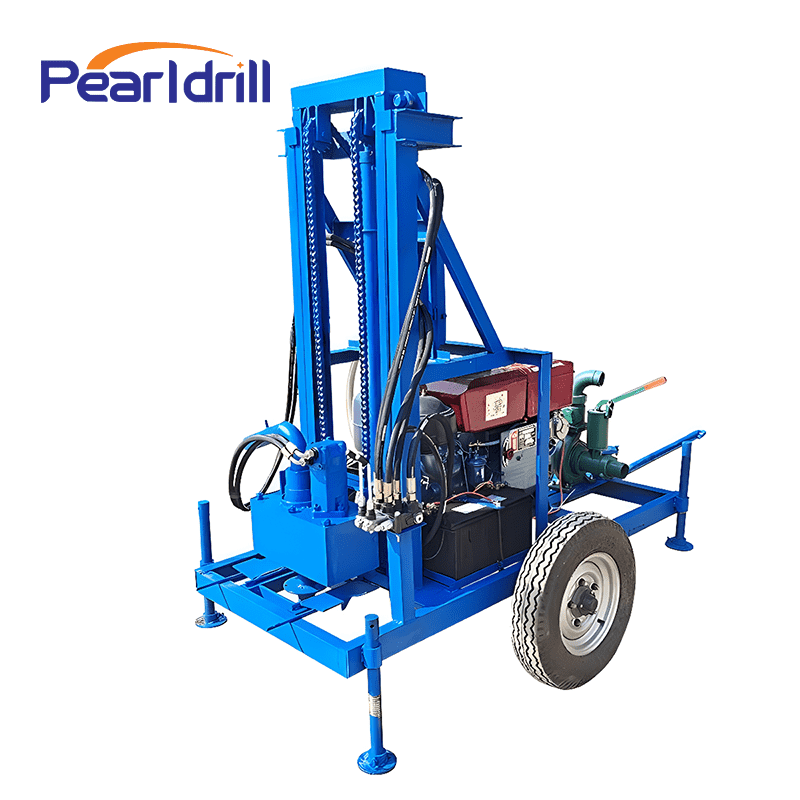Cleaning removable water well drilling rigs is an important maintenance task, which helps to prolong the life of the equipment, improve the working efficiency and ensure the drilling quality. As water well drilling rigs often work in harsh environments, they are easily contaminated with mud, rock chips, oil, etc., so they need to be cleaned regularly. The following are the steps and precautions for cleaning the removable water well drilling rig:
Preparation before cleaning:
safety first, choose a suitable cleaning site, prepare cleaning tools and materials.
Cleaning steps:
Remove large pieces of debris: Use tools such as brushes, shovels or scrapers to remove large pieces of mud, rock chips and dirt from the surface of the drilling rig.
High-pressure water rinsing: Use a high-pressure water gun or hose to thoroughly rinse the surface of the drilling rig from top to bottom.Use cleaning agent: For heavily oiled parts, cleaning agent can be used.
Inspection and lubrication: After cleaning, carefully inspect all parts of the rig, especially the connection parts and fasteners, to make sure there is no looseness or damage. Lubricate the parts that need to be lubricated to minimize wear and tear.
Drying: Use compressed air to blow dry the moisture on the surface of the rig, especially the electrical parts and pipelines, to prevent rust and short circuit.
Cleaning of special parts:
Drill bit: The drill bit is an important part of the rig and requires special attention to cleaning. Remove the rock chips and mud on the drill bit, check whether the drill bit is worn or damaged, and replace or repair it if necessary.
Drill pipe: Clean the mud and dirt on the inner and outer walls of the drill pipe, and check whether the drill pipe is bent or cracked.
Mud pump: clean the pump body, impeller, valve and other parts of the mud pump, check whether there is wear or damage.
Hydraulic system: Clean the hydraulic oil tank, oil pipe, oil cylinder, valve and other parts, replace the hydraulic oil and filter element.
Electrical system: Use dry rags or compressed air to clean the electrical parts, avoid flushing with water.
Precautions:Environmental protection: The sewage generated by cleaning should be properly handled and should not be discharged arbitrarily so as not to pollute the environment.
Safety: Pay attention to safety during the cleaning process to avoid personal injury and equipment damage.
Regular cleaning: According to the frequency of use and working environment of the rig, make a reasonable cleaning cycle, regular cleaning, and maintenance.
If you need to buy the right water well drilling rig, click the link below to contact our professional team.

Comments
Post a Comment